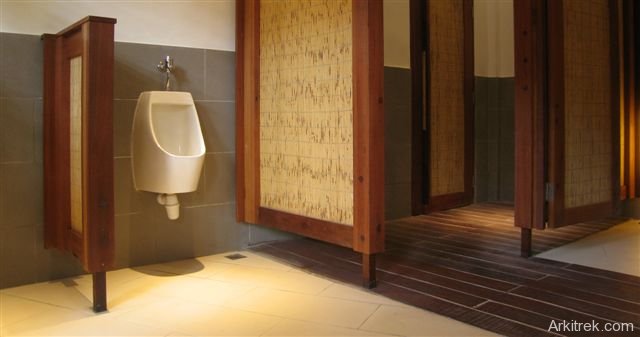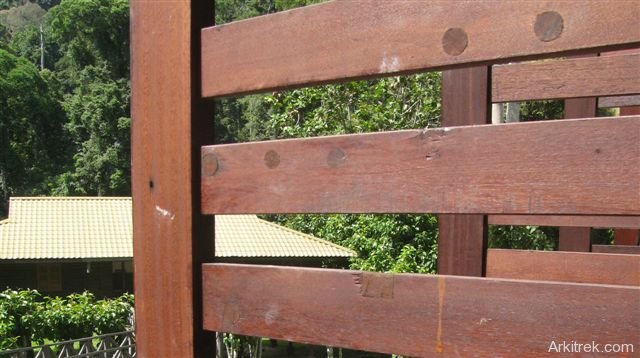Reclaimed Timber
By Ian Hall
The row of dark brown circles on the timber in the photo above are where bolts used to hold together the structure of an industrial warehouse (below). Responsible specification of timber in building projects gives me a headache. Reclaimed timber seems to be one of the best options but it’s hardly a solution to the mass market. What’s more, it may cost more than freshly cut timber so why should architects specify it?
Most of the timber that we used in the recent renovation of the Main Lodge building at Borneo Rainforest Lodge came from this warehouse. When specifying timber architects should consider the source. The lodge may contribute to the conservation of it’s own patch of rainforest but it wouldn’t be helpful for the building to cause rainforest loss elsewhere.
The advantage of specifying reclaimed timber is primarily to reduce demand for virgin timber. Another advantage is that timber is effectively a carbon store until it is burned or composted. Finally, reclaimed timber is invariably well seasoned which means that it is more reliable to work with and has an attractive appearance. As in the accompanying photos, the appearance can also tell a story about its past life and this appeals to the sentimental amongst us.
The downside is that the vagaries of supply effectively rules reclaimed timber out of the mass construction market. Even in smaller projects the added cost may deter some clients. Virgin timber is cheap because we don’t often pay the full environmental cost of timber extraction. This might include habitat restoration after logging and measures to reduce soil loss during logging for example. Reclaimed timber by comparison can be expensive due to it’s scarcity together with the labour cost of reclamation, cleaning and sorting.
The most viable alternative for a quick solution is to specify timber certified as sustainable by an organisation such as the Forest Stewardship Council. This however comes with no guarantee that you won’t cause damage to a valuable natural resource. The best FSC can do for you is to promise that using FSC certified timber is better than doing nothing.
There are no easy answers. We should try to use reclaimed timber where possible, use alternatives such as bamboo and coconut palm where practical and if we really must use virgin timber, try to make the most informed decision about where it comes from.
%RELATEDPOSTS%




